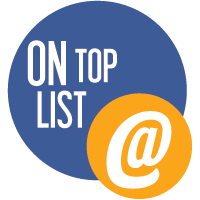By Catherine Elder
If you’re facilitating your first workshop it’s important to understand your role.
A facilitator is defined as someone who helps to bring about an outcome (including making decisions and achieving a result) by providing indirect and unobtrusive assistance, guidance, or supervision in a collaborative process.
Facilitating a workshop
You’ve done all the preparation and you now have people in a room (or virtual room). Start by thanking them for their time, stating the objective and reviewing the agenda. Then have them introduce themselves with their name, role and what they want to achieve from the workshop. You may be surprised by people’s perception of why they’re there and may get some valuable direction of what you need or what you need to clarify. If the people in the session haven’t collaborated before you may want to start to build trust and a team atmosphere with some fun icebreakers. You can also get them warmed up by having them do something, ideally together, even if it’s having them hand out sticky notes and set up the room (In a virtual setting you could have them practice on a whiteboard).
Its important to manage everyone’s expectations so keep to the agenda and make sure you’ve allowed for breaks. Outline any rules and protocols. People should feel comfortable enough to participate freely without judgement or criticism. Allow for a free flow of discussion but let participants know that if they get off topic the items will be put in a “parking lot” which could be discussed at another time.
Types of Workshops
There are four main types of workshops according to David Kolb (1984) Model of Experiential Learning:
- Reflecting on experience (e.g., putting people in pairs to discuss what they experienced then sharing with the group for further insights):
- This is useful when the goal is to identify pros and cons of a product/ service/ process
- This can be used as an icebreaker to build rapport
- This can be part of a focus group
- You can use Mind mapping and Collaborative Games like Affinity Mapping can to build an understanding of relationships
- Assimilating and conceptualizing (e.g., providing new information or a demonstration and having people design or discuss improvements or give new ideas):
- This is useful when the goal is to improve or create something new
- This can be used to build engagement and excitement
- You can use Prototyping, Brainstorming and Modelling
- Experimenting and practicing (e.g., having people try something new to change a behaviour or develop a skill to give them another perspective):
- This is useful when testing something that exists and for training
- This can be used for A/B testing, hypothesis testing and Lab, field, and natural experiments offer different levels of controls
- You can use the Observation technique
- Planning for application (e.g., having people look into the future and create a vision based on discussions):
- This is useful when you’re starting with a new product or service
- You can use Brainstorming and Prototyping
Your Role as Facilitator
As a facilitator you need to encourage participation, provide light guidance so participants don’t get off track, listen to the discussion and provide prompts if anyone is stalled (e.g., sometimes asking “Why do you think that is?” can reinvigorate the conversation).
Competencies you need to be a good facilitator are Communication skills including listening, public speaking and presenting; Negotiation and Conflict Resolution skills; Creative Thinking; and Organizational skills.
Have you achieved what you set out to?
You stated an objective at the beginning of the workshop. As a facilitator you need to guide the conversation enough so that the objective is achieved. Can you define needed actions (improvements, recommendations, new ideas) from the input you elicited in the workshop? It is important you capture the work either by having a note taker, recording an online session, taking photos of anything created in the workshop, and documenting your observations.
Sometimes more than one workshop is needed, or other elicitation activities need to be planned to fill in gaps of missing information. Each initiative is different. Let your participants know what the next steps are.





No comments:
Post a Comment